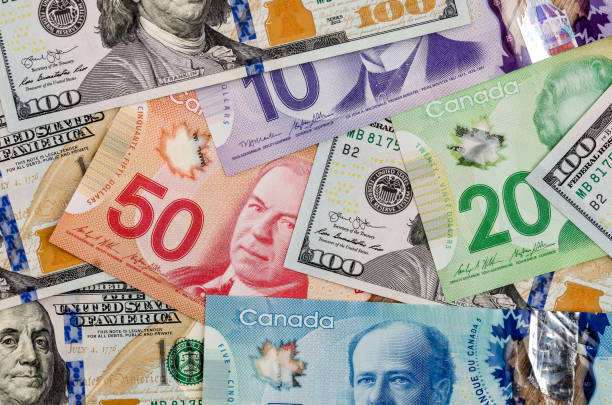USD/CAD edges higher to near 1.4350 amid weakening investor sentiment
- Gold remains bid as lack of Fed clarity and geopolitical frictions persist
- Gold Price Forecast: XAU/USD climbs above $4,250 as Fed rate cut weakens US Dollar
- U.S. November Nonfarm Payrolls: What Does the Rare "Weak Jobs, Strong Economy" Mix Mean for U.S. Equities?
- Tesla Stock Hits Record High as Robotaxi Tests Ignite Market. Why Is Goldman Sachs Pouring Cold Water on Tesla?
- Wall Street Sounds Alarm: "Bitcoin's Four-Year Cycle Invalidated" - Will the Crypto Bull Market Persist?
- U.S. November CPI: How Will Inflation Fluctuations Transmit to US Stocks? Tariffs Are the Key!

USD/CAD finds support as the US Dollar strengthens on safe-haven demand amid escalating global trade tensions.
Fed Chair Jerome Powell admitted the challenges in assessing the broader inflationary impact of tariffs.
The Canadian Dollar remains under pressure as investor sentiment weakens due to political uncertainty in Canada.
USD/CAD attempts to recover from recent losses, trading around 1.4330 during Asian hours on Friday. The pair may find support as the US Dollar (USD) strengthens on safe-haven demand amid rising global trade tensions driven by US tariff policies.
Federal Reserve (Fed) Chair Jerome Powell downplayed the inflationary impact of tariffs, calling it temporary but acknowledged the broader economic uncertainty. While recession risks have increased, Powell suggested they remain relatively low.
On the data front, US Initial Jobless Claims rose to 223K for the week ending March 15, slightly missing the 224K estimate and exceeding the previous week’s revised 221K figure. Meanwhile, the Philadelphia Fed Manufacturing Survey for March declined to 12.5 from February’s 18.1, marking a second consecutive monthly drop but remaining above the expected 8.5.
The Canadian Dollar (CAD) faces pressure amid weakening investor sentiment, influenced by political uncertainty in Canada. Reports suggest new Prime Minister Mark Carney may call a snap election on April 28, raising concerns over policy stability.
Additionally, investor sentiment has been dampened by US President Donald Trump’s tariff threats on Canadian imports, alongside existing duties on steel and aluminum. Furthermore, the Bank of Canada’s (BoC) recent rate cut to 2.75% has widened the interest rate differential with the Fed, driving capital outflows.
Read more
* The content presented above, whether from a third party or not, is considered as general advice only. This article should not be construed as containing investment advice, investment recommendations, an offer of or solicitation for any transactions in financial instruments.

